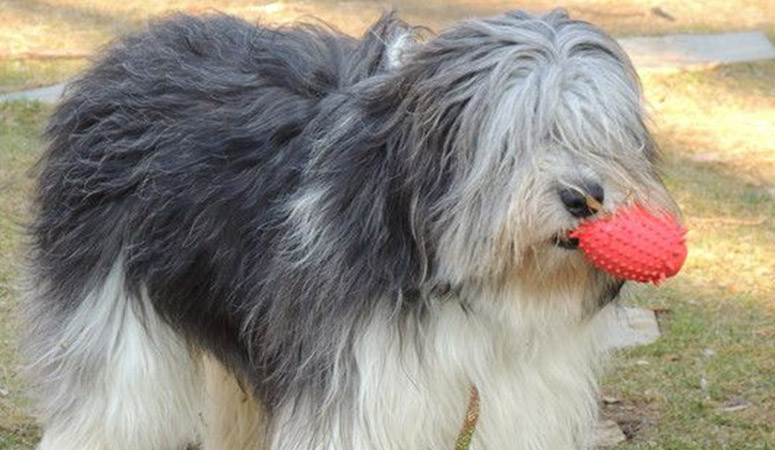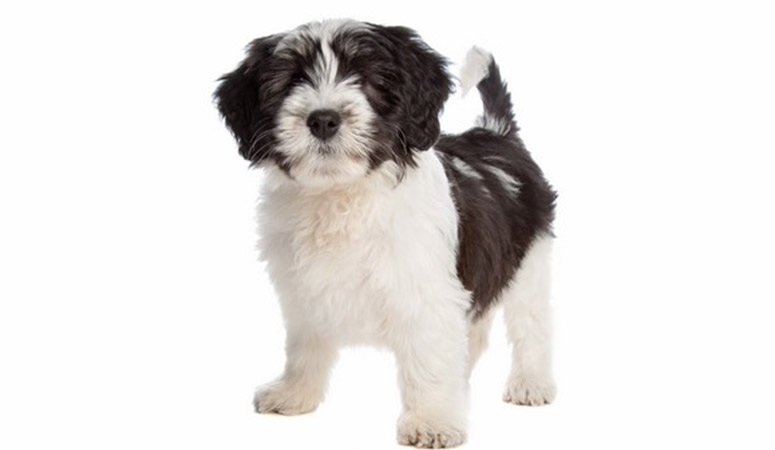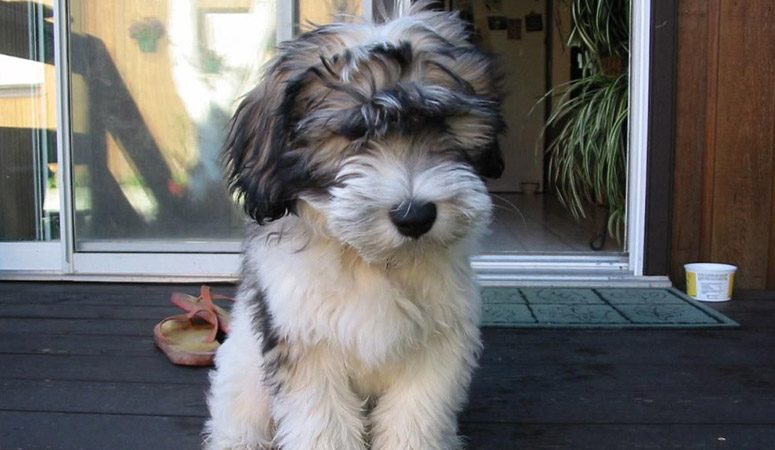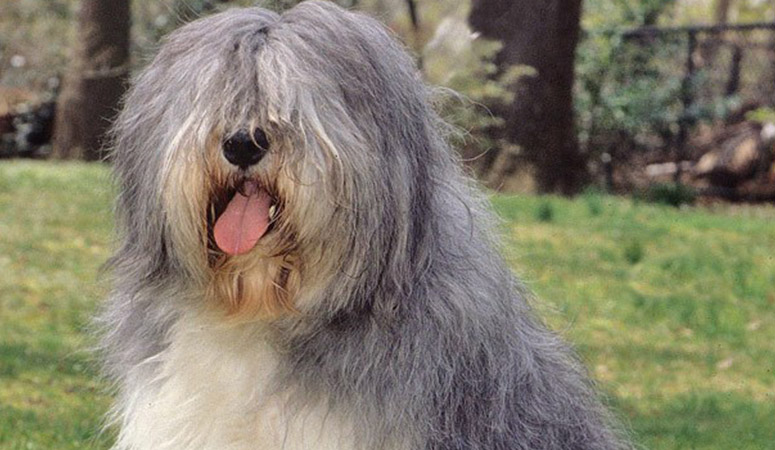Polish Lowland Sheepdog
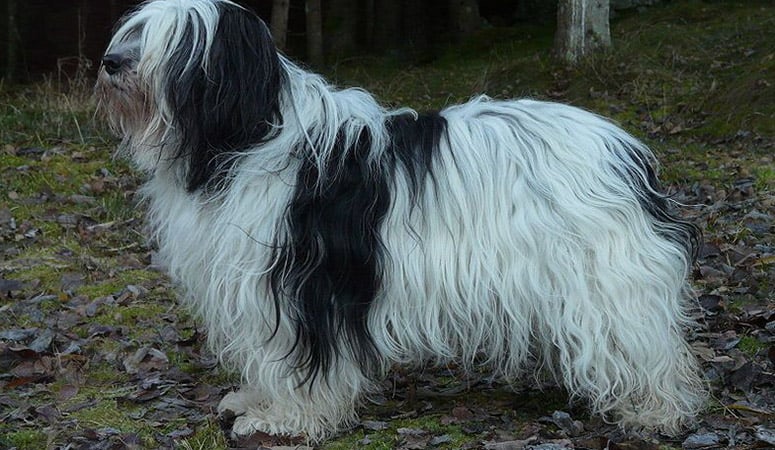
The Polish Lowland Sheepdog was originally bred for herding and guarding. Today they are still excellent working dogs. This breed is strong and muscular with medium size, which help the breed the dog to control livestock as herding breed. With alert, clever, compact and adaptable, they are good watchdogs and also beloved companions for Polish city dwellers.
| Other Names | PON, Polski Owczarek Nizinny (Polish) Valee Sheepdog |
| Color | Beige, Black, Black & White, Brown, Chocolate & White, Gray, Gray & White, Tri-Colored, White |
| Height | Males: 18-20 inches, Females: 17-19 inches |
| Weight | Males: 30-50 pounds, Females: 30-50 pounds |
| Life Span | 12-14 years |
| Personality | Confident, Clever, Lively |
| Exercise | Needs Lots of Activity |
| Origin |
| Popularity | #173 |
| Groom Needs | Daily Brushing |
| Kids Friendly | Yes with supervision |
| Dog Friendly | Yes with supervision |
| Watch Dog | |
| Family Dog | Yes |
| Litter Size | 4 to 6 puppies |
Polish Lowland Sheepdog Pictures
Polish Lowland Sheepdog Video
Introduction
The Polish Lowland Sheepdog is a well-muscled affair of strength, balance, and intelligence. It has a thick double coat, the undercoat of which is soft and dense, covered by a rough and wavy/straight topcoat. The hair around the head adds to its bulk and is likely to cover the eyes. They come in almost any color variety, brown, white, or gray being common ones. They are compact dogs, renowned for their powerful memory. The Polish Lowland Sheepdog is shaggy in appearance, lively, self-willed, and often independent.
A standard Polish Lowland Sheepdog is a medium-sized dog, a male dog stands 18-20 inches from shoulder to paw. Female types run only slightly smaller than the males, normally 17-19 inches tall, measured from shoulder to paw. A full-grown member of the breed should weigh 35-50 pounds, regardless of gender. The American Kennel Club classified this breed as a member of the Herding Group. They have an average lifespan of 12-15 years.
Living with Polish Lowland Sheepdog
The PON’s shaggy, thick, double coat requires a lot of maintenance to keep it free of tangles, though no trimming is necessary or even recommended. PONs don’t shed much.
A PON kept in full coat will need to be thoroughly brushed at least once a week. If he is kept in a puppy or “summer” clip will still need routine brushing to keep the coat free of mats and debris such as grass, weeds, and flower blooms.
Combing thoroughly at least twice a week and always before bathing. A bath every two months may be necessary. Like all dogs with fluffy coats, the PON gets dirty easily, so you’re in for muddy paws, leaves or burrs tracked into the house, feces on the hindquarters, or a wet and dirty beard.
The ears will also need to be checked weekly and cleaned if needed for dirt, redness, or a bad odor that can indicate an infection. And Wipe them out with a cotton ball dampened with gentle, pH-balanced ear cleaner to prevent problems.
Trim nails once or twice a month. Short, neatly trimmed nails keep the feet in good condition and protect your shins from getting scratched when your PON enthusiastically jumps up to greet you. Handle his paws frequently — dogs are touchy about their feet — and look inside his mouth and ears.
A high-energy, athletic dog, the PON needs ample exercise on a daily basis. At minimum, he should have a large, fenced-in yard to run around in for at least an hour or two daily. When not provided with sufficient physical exercise and mental stimulation, they can often turn moody and destructive.
Although the PON is ideally suited for rural life, he does well in apartments and houses without backyards as long as he has a job to do and is taken outside frequently for exercise.
PONs bond closely with their owners and love to accompany them on long walks or hikes, or working with their human partner in canine events such as obedience, herding, agility trials, or even just hiking and jogging with you.
The PON puppies should not be over exercised because their joints and bones are still growing. You should not let a dog jump up and down from furniture or going up or down the stairs, which will increase pressure on their joints and spines, and lead to some serious problems later in their lives.
PONs should do well on high-quality dog food, whether commercially manufactured or home-prepared with your veterinarian’s supervision and approval. The recommended daily amount is about 1.5 to 2.5 cups of high-quality dry food a day.
But any diet should be appropriate to the dog’s size, age, build, metabolism, and activity level. The quality of dog food you buy also makes a difference — the better the dog food, the further it will go toward nourishing your dog and the less of it you’ll need to shake into your dog’s bowl.
The PON benefits from two meals a day rather than one — and don’t leave food out for him all the time. He’s known for his hearty appetite and will overeat if he can.
Some dogs are prone to getting overweight, so watch your dog’s calorie consumption and weight level to keep him in good shape. Treats can be an important aid in training, but giving too many can cause obesity, which can shorten a dog’s life by several years so it’s important to keep an eye on their waistline from the word go.
Clean, fresh water should be available at all times.
Learn about which human foods are safe for dogs, and which are not. Check with your vet if you have any concerns about your dog’s weight or diet.
Polish Lowland Sheepdogs are generally healthy dogs, though there are some conditions the breed can be prone to, which include hip dysplasia and progressive retinal atrophy (PRA).
Not all PONs will get any or all of these diseases, but it’s important to be aware of them if you’re considering this breed.
As with all breeds, PONs’ ears should be checked regularly for signs of infection, and the teeth should be brushed often, using a toothpaste designed for dogs.
There are several health tests considerations specific to the breed, such as hip evaluation and ophthalmologist evaluation.
Responsible breeders test all breeding stock for conditions that can affect the breed. Regular visits to the vet for checkups and parasite control help to ensure the dog a long, healthy life.
Total Annual Cost: $2889
Cost is estimated for the first year and may vary depending on many factors, such as dog food, health care, leash, collar, licensing, possible fencing, crates, training and obedience classes, dog-walking, grooming, treats, toys, flea, tick, and heart-worm meds, microchips, etc.
PONs are excellent housedogs: accepting of other animals, gentle and tireless playmates for kids, alert watchdogs, and quick learners. PONs are affectionate, bouncy, trainable pets for owners who can handle a confident, territorial herding dog.
PONs are intelligent and can learn quickly, but they’ll become bored if training is repetitive. If you train your PON correctly, he’ll be an eager, enthusiastic student.
The breed can also be dominating, stubborn, and suspicious of strangers, and early socialization and puppy training classes are highly recommended.Also teaching a “Quiet” command as part of his basic canine manners is a good idea.
Train your PON with positive reinforcement techniques such as praise, play, and food rewards. If your teaching methods are harsh or boring, he will refuse to respond to you.
History
Also known as the Polski Owczarek Nizinny (PON) in Poland, where it got its name, the Polish Lowland Sheepdogs is thought to have developed in Central Asia before it came into Poland. The Tibetan Terrier and the Lhasa Apso are believed to be progenitors of the breed. Along the line, however, the Puli had probably been inoculated into the breeding of the Polish Lowland Sheepdog. They were rugged sheepdogs of Polish lowlands and also doubled as vigilant watchdogs, what with their courage and fearless disposition. This breed is regarded as a progenitor for the Bearded Collie in the 1500s. After the First World War, the Warsaw dog show was held in 1924, at which the Polish Lowland Sheepdog was exhibited.
It is widely known that the Second World War had almost driven the breed out of existence, with less than 200 dogs purportedly remaining for breeding. Dr. Danuta Hryniewicz is credited with the major part of the progress of the Polish Lowland Sheepdog in the 1950s, with her dog, named Smok, considered the ancestor of the modern breed. It served as the basis of the breed standard which was later written and accepted by the Fédération Cynologique Internationale in 1959. The Polish Kennel Club registered its first Polish Lowland Sheepdog in 1957, and ten years later the breed was exhibited at the World Dog Show. In 1987, an American breed club was established, which pushed for its recognition. The American Kennel Club (AKC) recognized the breed in 2001. The Polish Lowland Sheepdog is the national dog of Poland.
Helpful Information
Breed Club: THE AMERICAN POLISH LOWLAND SHEEPDOG CLUB
Breed Club Link: http://www.aponc.org/
Breed Club Rescue: PON Rescue and Adoption
Breed Club Rescue Link: http://www.aponc.org/rescue%20&%20adoption.htm

